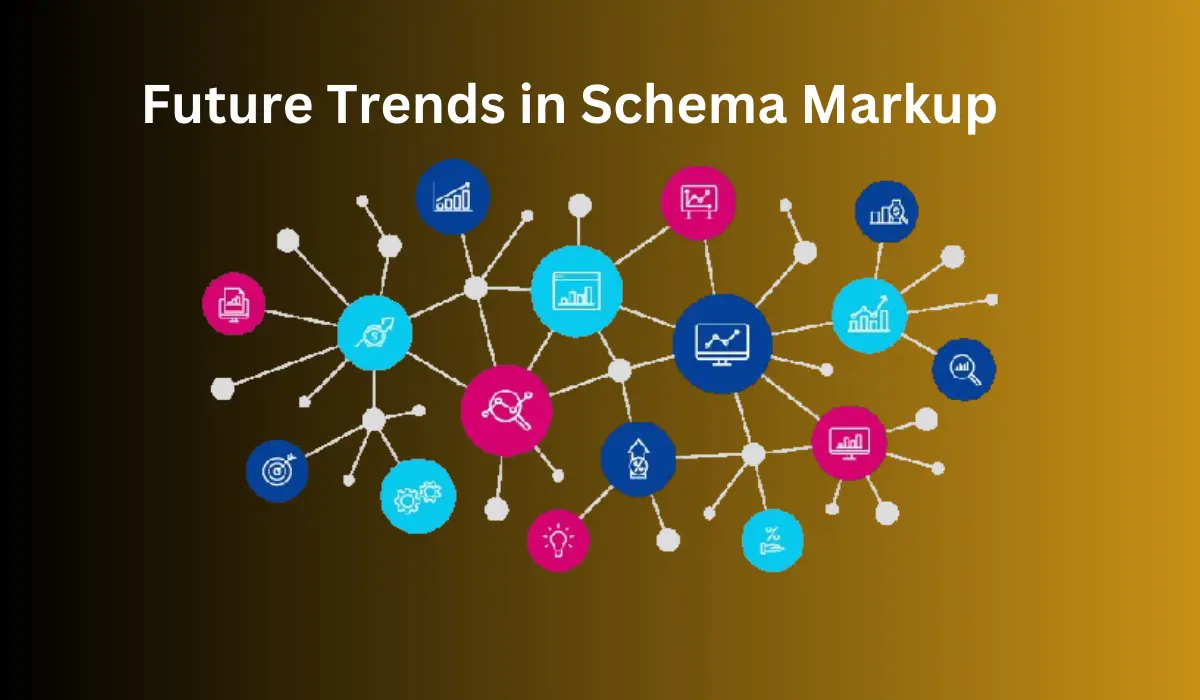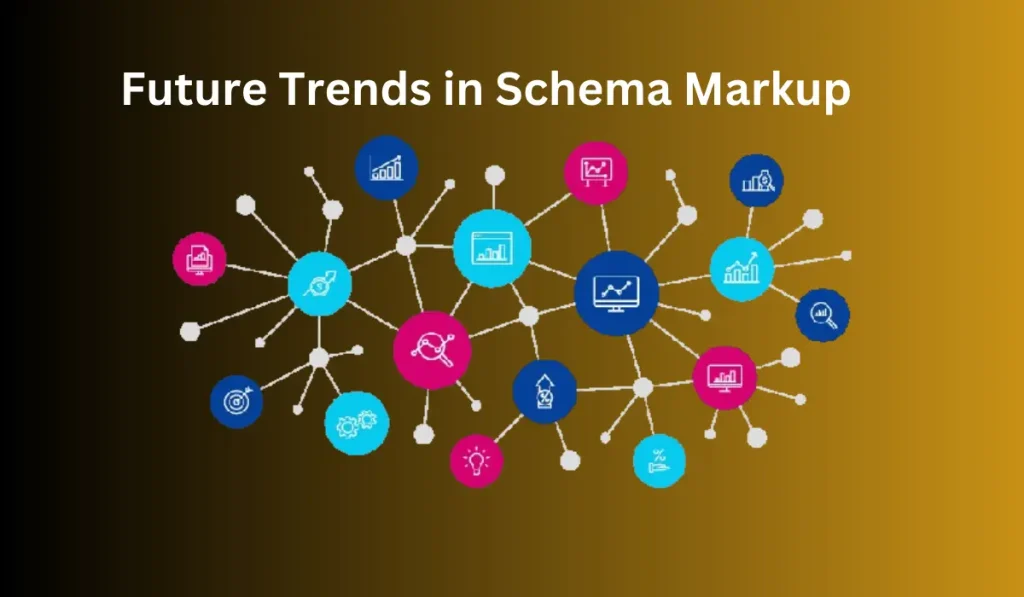In the ever-evolving landscape of digital marketing and search engine optimization (SEO), staying ahead of the curve is essential. One tool that has gained significant traction in recent years is Schema Markup. This structured data vocabulary helps search engines understand the content of web pages better, leading to richer search results. As technology advances, so too does the potential of Schema Markup. Let’s explore the future trends in schema markup.
Enhanced Rich Snippets:
Rich snippets have transformed search engine results pages (SERPs), providing users with more information at a glance. However, the future of Schema Markup lies in enhancing these snippets further. We can anticipate richer and more interactive snippets that incorporate multimedia elements such as videos, audio clips, and 3D models. This evolution will not only improve user experience but also increase click-through rates for websites.
Voice Search Optimization:
With the rise of virtual assistants and smart speakers, voice search has become increasingly prevalent. In response, Schema Markup will adapt to accommodate voice search optimization. Future schema implementations will focus on providing structured data that is conducive to voice-based queries, enabling websites to rank better in voice search results. This may involve optimizing for natural language queries and local intent, among other factors.
As voice search continues to gain prominence in the digital landscape, leveraging Schema Markup for voice search optimization emerges as a strategic imperative for businesses seeking to maintain competitiveness and relevance. By incorporating structured data vocabulary into their content strategy, businesses can enhance contextual understanding, optimize for local queries, and increase visibility in voice search results. Embracing Schema Markup as a cornerstone of voice search optimization empowers businesses to navigate the evolving landscape of search with confidence and effectiveness.
AI and Machine Learning Integration:
In the fast-paced world of search engine optimization (SEO), staying ahead of the curve is essential for businesses looking to maintain their online presence. The integration of artificial intelligence (AI) and machine learning (ML) with Schema Markup represents a groundbreaking development in this domain. By harnessing the power of AI and ML, businesses can enhance the effectiveness of their schema markup strategies, leading to improved search visibility, user engagement, and overall digital performance.
Automated Schema Generation:
Traditionally, implementing Schema Markup has been a manual and time-consuming process, requiring webmasters to annotate HTML code with structured data. However, AI and ML technologies are changing the game by automating schema generation. Advanced algorithms can analyze website content, identify relevant entities and attributes, and generate schema markup automatically. This streamlines the implementation process, allowing businesses to scale their schema markup efforts efficiently.
Dynamic Schema Optimization:
The dynamic nature of search algorithms demands continuous optimization to maintain visibility and relevance in search results. AI-powered schema optimization tools leverage machine learning algorithms to analyze performance metrics, user behavior, and search trends. By monitoring these factors in real-time, AI-driven systems can adapt schema markup dynamically, optimizing content for maximum impact and ensuring alignment with evolving search algorithms.
Natural Language Understanding:
AI and ML technologies excel in understanding natural language patterns and user intent. When integrated with Schema Markup, these capabilities enable more accurate and contextually relevant markup implementations. AI-powered systems can analyze the semantics of website content, identify key entities and relationships, and generate schema markup that aligns with the intent of user queries. This enhances the visibility of web pages in search results and improves the overall user experience.
Predictive Structured Data Recommendations:
Machine learning algorithms excel in identifying patterns and correlations within large datasets. When applied to SEO and Schema Markup, ML models can analyze historical performance data, user interactions, and content attributes to generate predictive recommendations for structured data implementation. These recommendations can include schema types, attributes, and markup strategies tailored to specific content categories, audience demographics, and search trends.
Personalized Search Experiences:
Personalization is becoming increasingly important in SEO, as search engines strive to deliver tailored search experiences to users. AI-powered schema markup can contribute to personalized search by dynamically adjusting structured data based on individual user preferences, behavior, and context. By leveraging AI-driven insights, businesses can deliver more relevant and engaging content to users, thereby enhancing user satisfaction and driving higher conversion rates.
Cross-platform Compatibility:
In today’s digital ecosystem, users engage with content across various platforms and devices. To cater to this multi-platform landscape, Schema Markup will evolve to offer seamless compatibility across different environments. Whether users are accessing content on a desktop computer, mobile device, or smartwatch, schema implementations will ensure consistent and optimized display across all platforms.
Responsive Schema Markup:
A cornerstone of cross-platform compatibility is responsive design, and the same principle applies to schema markup. Businesses should prioritize implementing schema markup that adapts seamlessly to different screen sizes and resolutions. This involves using responsive schema types and properties that adjust dynamically based on the device’s viewport size. By ensuring that schema markup remains legible and accessible across all devices, businesses can enhance their visibility in search results and provide a consistent user experience.
Structured Data for Mobile-First Indexing:
With Google’s shift towards mobile-first indexing, optimizing schema markup for mobile devices is paramount. Businesses should prioritize implementing mobile-friendly schema types, such as MobileApplication, MobileSite, and MobileWebPage, to ensure that their content is optimized for mobile search. Additionally, schema properties such as breadcrumbs and AMP (Accelerated Mobile Pages) markup can further enhance mobile usability and search visibility.
Accessibility-Focused Schema Markup:
Ensuring accessibility is crucial for reaching all users, regardless of their device or platform. Businesses should prioritize implementing schema markup that enhances accessibility, including schema types such as AccessibilityHazard, ARIA properties, and metadata for screen readers. By making content more accessible through structured data, businesses can improve usability and inclusivity across platforms, reaching a broader audience and enhancing their brand reputation.
Structured Data for Dynamic Content:
Dynamic content, such as user-generated reviews, real-time updates, and personalized recommendations, presents a challenge for traditional SEO strategies. However, Schema Markup holds the potential to address this challenge by enabling structured data for dynamic content. Future schema enhancements will empower websites to markup dynamic elements effectively, providing search engines with up-to-date and relevant information.
Contextual Awareness:
Future iterations of Schema Markup will exhibit enhanced contextual awareness, allowing search engines to understand the nuanced relationships and attributes of dynamic content elements. Advanced schema vocabularies and properties will enable businesses to provide richer metadata about dynamic content, including real-time updates, user interactions, and personalized recommendations. This heightened contextual understanding will enhance the relevance and visibility of dynamic content in search results.
Semantic Integration:
The future of Schema Markup lies in deeper semantic integration, leveraging natural language processing (NLP) and machine learning algorithms to interpret the meaning and intent behind dynamic content. Schema markup implementations will become more adaptive and intelligent, dynamically adjusting to changes in user behavior, content preferences, and search algorithms. By harnessing semantic technologies, businesses can unlock new opportunities for optimizing dynamic content for maximum impact.
Dynamic Schema Generation:
AI-driven schema generation tools will revolutionize the process of marking up dynamic content, automating the creation and optimization of structured data based on contextual cues and user insights. These tools will analyze content attributes, user interactions, and real-time data feeds to generate dynamic schema markups tailored to specific content categories and audience segments. By streamlining schema generation, businesses can accelerate their SEO efforts and stay ahead of the curve in the dynamic digital landscape.
Continuous Evolution:
As the digital landscape continues to evolve, so too will Schema Markup. Future iterations of schema vocabularies and properties will reflect emerging trends, user behaviors, and technological advancements. Businesses must embrace a mindset of continuous adaptation and evolution, staying abreast of new schema developments and incorporating them into their SEO strategies for dynamic content. By remaining agile and forward-thinking, businesses can leverage Schema Markup to drive success in the dynamic digital marketplace of tomorrow.
Also Read
Focus on E-A-T Signals:
Expertise, Authoritativeness, and Trustworthiness (E-A-T) are critical signals that search engines use to evaluate the quality of content. In the future, Schema Markup will play a pivotal role in signaling E-A-T factors to search algorithms. Websites will leverage schema implementations to showcase credentials, certifications, and other indicators of expertise and authority, thereby bolstering their online credibility.
Authorship Markup:
Authorship markup enables businesses to attribute content to specific authors, thereby enhancing the perceived expertise and authority of the content. By incorporating schema properties such as author, author URL, and author Name, businesses can establish a direct connection between content and credible contributors. This attribution reinforces the expertise of authors and enhances the trustworthiness of the content in the eyes of both users and search engines.
Organization Markup:
For businesses operating in specific industries or niches, organization markup offers an opportunity to showcase expertise and authority within their respective domains. Schema types such as Organization and Local Business enable businesses to provide detailed information about their credentials, certifications, and affiliations. Businesses can bolster their authority and trustworthiness in search results by highlighting relevant accolades, partnerships, and industry affiliations.
Review Markup:
Customer reviews are a key component of E-A-T signals, providing valuable insights into the quality and credibility of products, services, and businesses. Schema Markup offers schema types such as Review and Aggregate Rating to markup user-generated reviews and ratings. By incorporating review markup into their websites, businesses can showcase positive feedback and endorsements from satisfied customers, thereby enhancing trustworthiness and credibility.
Credential Markup:
For businesses offering specialized services or expertise, credential markup provides an opportunity to highlight qualifications, certifications, and accreditations. Schema properties such as credential Awarded, credential Category, and credential URLs enable businesses to showcase their credentials in a structured format. Businesses can reinforce their expertise and authority in relevant subject areas by providing verifiable information about their qualifications.
Trust Signals Integration:
In addition to E-A-T signals, trust signals such as security certifications, privacy policies, and customer testimonials contribute to overall trustworthiness. It enables businesses to incorporate trust signals into their websites through schema types such as Security Schema, Privacy Policy, and Testimonial. By marking up trust signals with structured data, businesses enhance transparency and credibility, fostering trust and confidence among users.
End Words
The future of Schema Markup is brimming with possibilities, driven by technological innovations and evolving user behaviors. From enhanced rich snippets to AI-powered optimizations, the future trends of schema markup promise to revolutionize the way we approach SEO and digital marketing. By staying abreast of these emerging trends and embracing schema markup strategies, businesses can position themselves for success in the dynamic landscape of online search.





